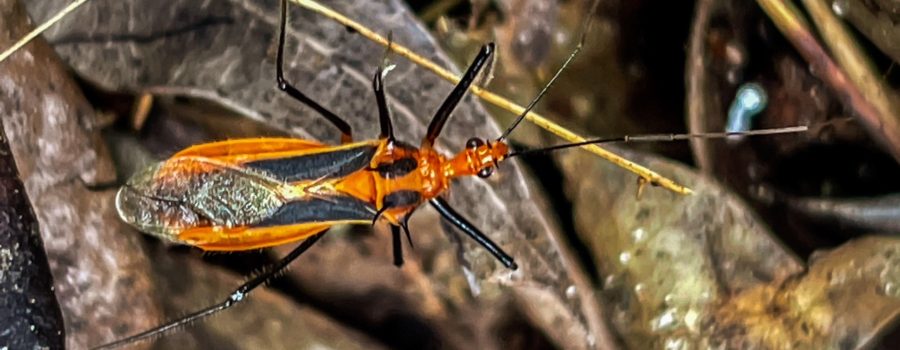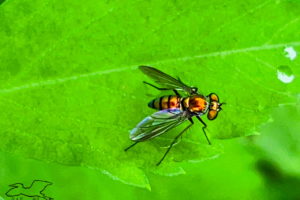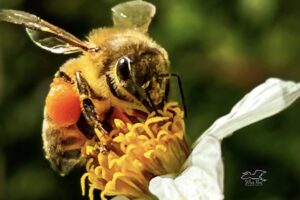The Colorful Red Bull Assassin is Great for Pest Control

The insect world never ceases to amaze me. I know that plenty of people out in the world see all bugs as bad, but many of them are actually incredibly beautiful and useful. The Red Bull assassin (Repipta taurus) is one of those. It’s frightening common name and it’s bright red/orange and black warning coloration both make it seem like something that you definitely don’t want to have around, but in fact, it’s one of the best bugs you could possibly have in your flower or vegetable garden. The assassin name comes from it’s voracious appetite for other invertebrates, mainly pest species. It loves aphids, flies, mosquitoes, and plant damaging caterpillars and grasshoppers. And like my friend/enemy the Hentz striped scorpion, it also loves to eat cockroaches!

Earlier this year, during the early fall, I was digging around in some of the leaf debris under my oak trees looking for centipedes or spiders (or both) when I came across this gorgeous beetle crawling around. I don’t generally handle my insect subjects anyhow, but I definitely took note of this one’s bright warning coloration. I know that sometimes these colors are just to fool predators, but my philosophy is to not take any chances. Besides, I try not to harass my subjects, but just to observe and document them. I followed this beetle around in the leaves and shot some photos for a few minutes before it disappeared under the leaves again. I could have dug it out again, but that would have been harassment, so I let it go on it’s way and I went back to looking for spiders. I wasn’t sure what kind of beetle it was, and honestly, I forgot about it for quite awhile. Then last week while going through some of my images, I rediscovered it and identified it as a Red Bull assassin bug.

I wasn’t familiar with this particular species, but I am familiar with assassin bugs since we have several species down here, and in fact, the Red Bull assassin looks very similar to to milkweed assassin bug (Zelus longipes), which is very common in these parts (dummy me didn’t even think of the striking resemblance until I identified the Red Bull assassin!!). Gardeners love them, and sometimes even purchase nymphs to put in their gardens to protect the plants, but many other people hate them, since they can and sometimes will bite, and can carry Chagas’ disease. Assassin bugs in general are active hunters and will stalk their prey or will hide in leaf litter, mulch, or sometimes inside flowers and jump out to grab unsuspecting insects. They will grab the prey with their front legs that are covered in a sticky mucus and then inject them with a paralytic toxin through their long, hollow proboscis. They then inject digestive enzymes that liquify the prey insect inside it’s own exoskeleton. When assassin bugs are done feeding, all that is left is an empty shell. Some assassin bugs may also bait their prey by placing the bodies of previously killed insects for other insect predators to find.

Assassin bugs can be found around the world, mainly in tropical and subtropical regions, but they do appear to be expanding their ranges. The Red Bull assassin is found in the southern United States, Mexico, Central America, and into northern South America. They can be found in almost any habitat that has other insects to feed on including woods and forests, rain forests, grasses, meadows, pastures, farm fields, and even in urban environments like gardens, parks, and sometimes inside homes. Most of them seem to prefer to hide, so most of the time people don’t come into much contact with them, but they will bite people if threatened or squashed. Most human bites occur when people are gardening or when moving outdoor debris. The bite can be painful with localized swelling and redness, but is otherwise harmless. Overall, the good that assassin bugs do by preying on pest species outweighs the harm that they can cause by biting humans. Nevertheless, I would definitely place assassin bugs on the touch me not list and only handle them with great care if you absolutely have to.

If you like beautiful nature photography and artwork along with interesting and engaging content, then you will love this blog! Subscribe below and see for yourself!





Recent Comments